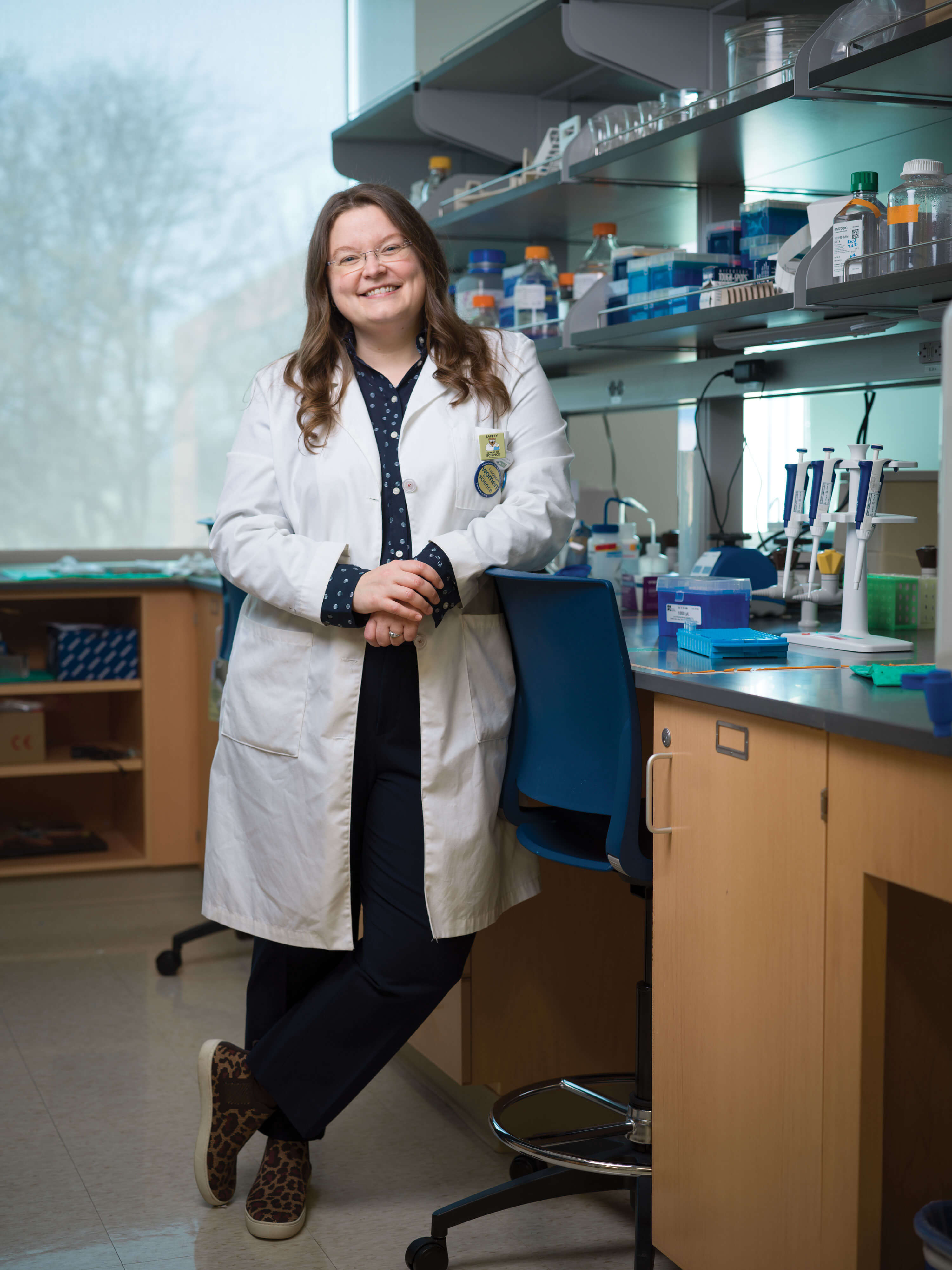
That Million-Dollar Feeling
Megan Phifer-Rixey wins $1.1 million NSF grant for research into how urbanization impacts wildlife.
Assistant Professor of Biology Megan Phifer-Rixey was awarded a five-year, $1.1 million grant from the National Science Foundation (NSF) initiative for the Faculty Early Career Development (CAREER) Program. The grant will support her research on the evolutionary impact of urbanization on house mice while expanding educational experiences and resources across campus and beyond. She talked with us about her work and what the grant will make possible.
Can you explain your research and how this grant will advance that work?
My work is focused on understanding how organisms adapt to environmental variation. Previously, much of the research in my lab has looked at how latitudinal variation affects house mice. So we’ve really been focused on how mice adapt to variation in climate.
This grant is a new direction for my lab. We’ll be focusing on how living in an urban environment impacts mice differently than living in more rural environments. Animals that live in urban areas could have different diets, experience different types of stress, and move around in different ways than animals in rural areas. Over time, those differences can shape how populations evolve and adapt. We’ll be looking at genomic data to investigate the evolutionary impacts those urban environments might have.
What are some of the broader implications of this research?
Urbanization is a growing phenomenon. Much of the world’s population is concentrated in urban areas, and our use of land is fundamentally changing as populations get bigger. This work could further our understanding of how urban environments affect all wildlife. That will be increasingly important to understand as more people live in urban environments and we have more human-wildlife interactions occurring in our cities.
One of the things I’m really interested in is the genetics of complex traits, which are traits that are driven by variation in genes and the environment. Body size is a good example of that. Lots of things affect body size: your diet, your activity level, things that happened in the womb before birth—so there is an environmental component. But there are also many genes that contribute to body size. This work could help us better understand the connections between these traits and the underlying genetics.
How are undergraduate students involved with this research?
One of my students is using GIS [geographic information systems] analysis to quantify different aspects of land use and population density to help target specific collection areas for this summer. Once we collect our mice, the students will be involved in the genetic analysis of tissue samples and analyzing traits. They’ll also be preparing natural history specimens from the mice we collect, which will help fill gaps in our natural history collections and be a resource for others to use.
How will this grant have an impact on teaching and learning outside your lab?
One part of this project will be looking at how genes and the genome respond to different environments. We’ll be generating a lot of gene expression data that will need to be analyzed. I’ll also be developing projects that will allow students who aren’t in my lab to use this data to complete bioinformatics projects. [Assistant Professor of Chemistry] Nikita Burrows, whose expertise is in evaluating project-based approaches to learning, will be assessing the effectiveness of these projects to see how they improve student outcomes. And she’ll be able to formally write that up and publish it as a classroom exercise, which is one way that broadens the impact beyond my lab.
In the final year of the grant, we’ll also be offering an interdisciplinary seminar with the English Department. [Associate Director of First-Year Writing and Assistant Professor of Rhetoric and Composition] Courtney Werner will help create a science writing class in which students will learn to communicate the results of this work to the public. We also have funding in later years to bring local high school teachers into the lab during the summer. We’ll be able to give them exposure to that sort of environment as well as lessons they can take back to their own students.
This is ultimately a community project about fostering new scientists in the classroom. We’re trying at every level to make the most of this opportunity.